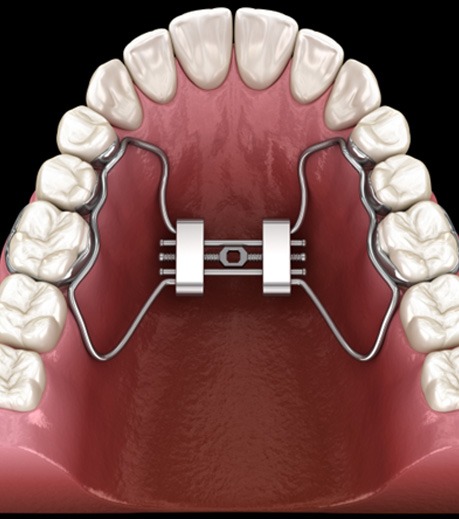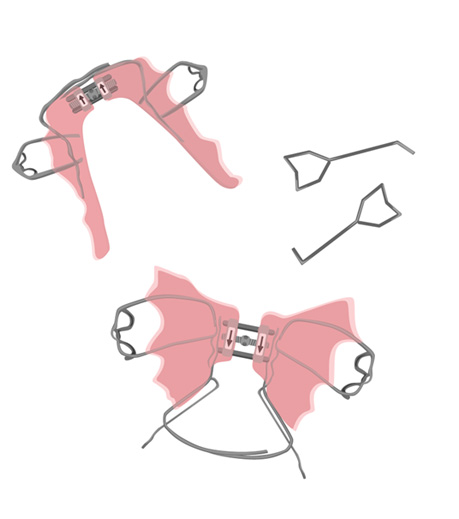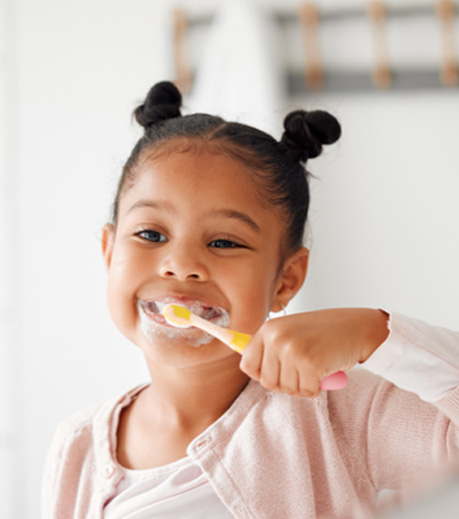Palatal Expander Cumming
Make Room in the Upper Jaw

Orthodontics is about so much more than braces! It can involve the use of a range of devices, each of which aims to accomplish a specific purpose. The goal is to optimize the alignment of the teeth and jaws, leading to better overall function and a decreased risk of future problems. One appliance that our Cumming team sometimes uses is known as a palatal expander. What are palatal expanders, and how do they work? Continue reading below to find out, or contact us directly to ask questions.
What Are Palatal Expanders?

A palatal expander, also called a palate expander, is an orthodontic appliance that has the goal of widening the upper dental arch. It does so by gently placing pressure on the two halves of the upper jaw, gradually moving them apart. This affects bone development and can result in a permanent expansion of the upper jaw. As a result, the patient is at a reduced risk of overcrowded teeth, bite misalignment, and other problems.
Palatal expanders are usually used during childhood, when a patient is still growing, and it is easier to influence the growth of their jaw. In some cases, though, these devices are used on teens and adults (though the entire treatment process may be more complex).
How Do Palatal Expanders Work?

Most patients should start using a palatal expander when they are 7 or 8 years old. If your child is in that age range and has not yet undergone an orthodontic evaluation, now is the time!
If our team determines that a palatal expander is necessary, we will determine which type of device would be best. A removable palatal expander looks like a retainer and can be used in cases where only slight widening of the dental arch is required.
A rapid palatal expander is bonded onto the back teeth. It has a tiny screw that should regularly be turned with a special key in order to continually influence the jaw’s growth.
Depending on circumstances, your child might need to use their palatal expander for 3 – 6 months to achieve the desired results.
Caring for a Palatal Expander

Here are some things you can do to help your child take good care of their palate expander:
- Encourage your child to maintain excellent oral hygiene by brushing thoroughly around the expander and flossing daily to prevent plaque buildup and gum irritation. (If the expander is removable, it should be taken out of the mouth regularly for cleaning.)
- Ensure your child avoids sticky, hard, and chewy foods that might damage the fixed expander, such as caramel, chewing gum, or hard candies.
- Monitor your child’s comfort level and reassure them that temporary soreness or pressure is normal. Offer soft foods during the adjustment period if necessary.
- Take your child to all scheduled follow-up appointments to monitor progress and ensure the expander is functioning as intended.
- Remind your to use the expander as instructed. This involves regularly turning the key as instructed by their orthodontist.
Palatal Expander FAQs
Can Palatal Expanders Be Used on Teens and Adults?
Palatal expanders are most commonly used for children because their bones are still developing and respond well to orthopedic guidance. However, you may still benefit from this treatment as a teenager or adult, although the process might require more time and careful planning. The flexibility of your palate decreases with age, so your orthodontist will assess your unique situation before recommending a palatal expander.
As an orthodontic practice in Cumming, we assess every patient individually to determine suitability for expanders. For teens and adults, additional methods, such as surgically assisted expansion, may sometimes be necessary. We will discuss your goals, review your dental and medical history, and conduct detailed imaging to guide our recommendations.
Are There Any Eating Restrictions with a Palatal Expander?
During treatment with a palatal expander, your child will need to make some changes to their diet in order to avoid damaging the appliance. Hard, sticky, and chewy foods can loosen or break the expander, which may delay progress. We recommend a diet of primarily soft foods that are not too chewy or sticky.
Our practice will provide you with a list of foods to avoid and offer tips for maintaining a healthy and satisfying diet for your child during treatment. We are always available to answer your questions or provide additional guidance regarding food choices.
Do Palatal Expanders Hurt?
When your child’s palatal expander is first placed, they might feel pressure against their teeth and palate. This sensation is normal and indicates the device is working to create space. Some individuals experience mild discomfort or soreness, especially following adjustments, but this feeling usually fades within a few days. You can provide over-the-counter pain relief and soft foods to alleviate any temporary discomfort.
Our practice will guide you through what to expect and offer support as your child adjusts to the expander. We will monitor their progress at regular appointments and address any concerns about pain or discomfort. If your child ever experiences severe or persistent pain, we urge you to contact us promptly so we can evaluate the appliance and make necessary adjustments.
What Should Happen After Treatment with a Palatal Expander?
After the palatal expander has completed its work, we will remove the appliance and evaluate the results. Your child may experience a marked improvement in their bite and the alignment of their upper jaw.
We place great importance on retention following expansion. Your child will likely need a retainer to maintain the new width of their palate and prevent relapse.
The next phase often involves wearing braces or clear aligners to refine the positioning of the teeth. We will schedule follow-up visits to monitor your child’s progress and address any ongoing needs.
What Should I Do if My Child’s Expander Breaks?
If your child’s palatal expander breaks, you should contact our office immediately for guidance. Avoid trying to adjust or repair the appliance yourself, as this could cause further damage or discomfort. In the meantime, your child should avoid eating hard or sticky foods and be careful not to touch the expander with their fingers or other objects.
We treat broken appliances as a priority and will arrange to see your child as soon as possible. During the visit, we will assess the extent of the damage and decide whether to repair or replace the expander. Our team will work to minimize disruption to your child’s treatment; we want their progress to get back on track ASAP!

